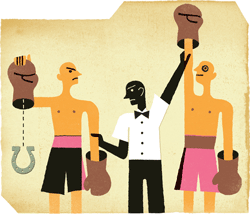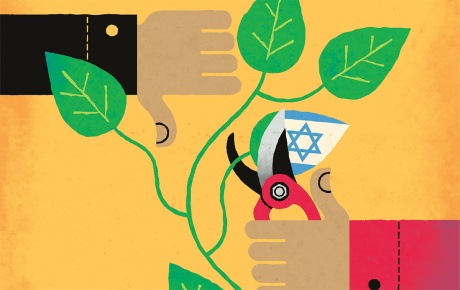You probably don’t want to tell your kids this, but cheating is a very winning strategy. Models created by evolutionary biologists show that it’s the members of a species who connive, steal, and hoard that prevail over those who are kind and sharing. “Even in simple organisms, the good guys are easily undermined by the cheaters,” says Thomas Flatt, a postdoctoral research fellow in Brown’s Department of Ecology and Evolutionary Biology. “From a theoretical evolutionary perspective, cheating is very often the best thing to do.”

And yet there are plenty of organisms that do in fact cooperate with one another. Lions hunt in packs. Ants and bees create colonies. For decades, scientists have wondered how such cooperation ever evolved given how advantageous selfishness is to survival.
Recently, Flatt and several colleagues devised an ingenious model that finally seems to offer a new and coherent explanation for this paradox. It’s based on game theory, a branch of economics developed in the 1940s and ’50s that’s used to assess the benefits of deploying a particular strategy in a highly competitive and uncertain environment. Most of the time, game theory has been put to use in the business world or in war games, but Flatt and his group applied it to evolutionary processes in nature, which is also a highly competitive and uncertain environment. Under what circumstances, they wondered, would an individual organism be best advised to cooperate rather than pilfer.
Flatt and his colleagues imagined a colony of simple organisms dominated by cheaters, where, over time, a few random genetic mutations produce a handful of members whose personalities dispose them to cooperate. If group membership and size remained static, then the cooperators would quickly starve and die out. But that’s not always what happens, because very often members of the group leave in search of a mate or better hunting grounds. Flatt found that if the group was relatively small in size to begin with and then enough cooperators stayed behind, they could actually grow powerful enough to rout any remaining cheaters. Eventually, the good guys’ offspring would proliferate and the colony would go from being an unruly outpost of the Wild West to a realm of social harmony.
So how does this apply to us humans? Well, it’s an open debate whether we are inherently cheaters or cooperators, but there are often times when we do find a way to work together. Flatt believes that the same model that explains cooperation among simple organisms explains it among humans—over time, enough cooperators came to dominate their social circles that cooperation prevailed as the most advantageous model of behavior. But then humans took it a step further by developing rules and laws that punished cheaters, a method of social control that again gave cooperators an edge in the competition for survival. “What’s exciting about our approach is that is so simple and so general—in principle it can be applied to explain cooperation at all levels of biological complexity, from bugs to humans,” said Flatt. “Now we have a new mechanism that explains when cooperation can work.”





